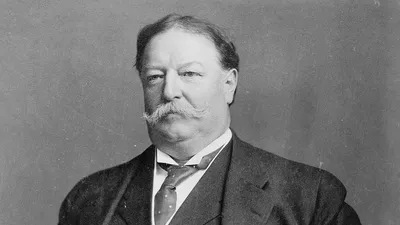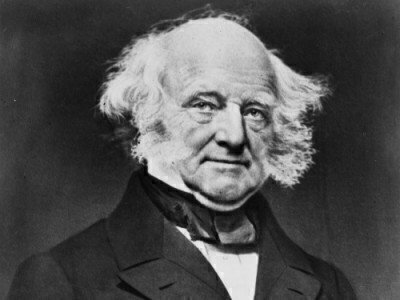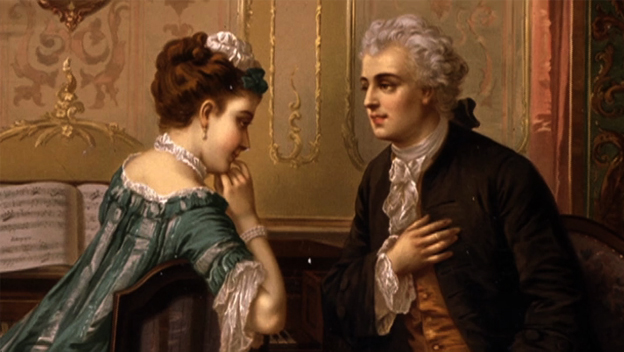mashupch.com – William Howard Taft, the 27th President of the United States, is a historical figure whose legacy extends far beyond his single term in office. Known for his distinct path through American politics and law, Taft’s legacy is most notable for his dual roles as both a reform-minded president and as the only person to ever serve as both the President and the Chief Justice of the United States Supreme Court. His contributions to American governance, law, and public service remain relevant today, as his policies and judicial leadership continue to shape the political and legal landscape of the United States.
In this article, we will explore the multifaceted legacy of William Howard Taft, focusing on his tenure as president, his time as chief justice, and the lasting impact of his actions in both the political and legal spheres.
Early Life and Political Beginnings
A Family Legacy in Public Service
William Howard Taft was born on September 15, 1857, in Cincinnati, Ohio, into a family with a longstanding tradition of public service. His father, Alphonso Taft, was a prominent lawyer, politician, and diplomat who served as both the U.S. Attorney General and Secretary of War under President Ulysses S. Grant. The influence of his father instilled in William a sense of duty toward serving his country, which would become the driving force behind his own political career.
Taft’s early education at Yale University and later at the University of Cincinnati College of Law solidified his commitment to the legal field. His legal expertise would prove invaluable throughout his career, both as president and, later, as Chief Justice of the United States. His career trajectory quickly expanded into a series of high-profile positions, from serving as a judge on the Superior Court of Ohio to becoming the Governor-General of the Philippines under President Theodore Roosevelt. These roles provided Taft with a diverse set of experiences that would inform his leadership style and decision-making.
Presidency: 1909–1913
An Introduction to the Oval Office
William Howard Taft assumed the presidency in 1909, succeeding his friend and mentor, Theodore Roosevelt. As a trusted ally of Roosevelt, Taft was seen as a continuation of the progressive agenda Roosevelt had championed. However, Taft’s presidency soon diverged from Roosevelt’s, both in terms of his policies and his approach to leadership.
Taft’s administration was marked by his focus on maintaining the stability of the economy while also implementing progressive reforms. One of the cornerstones of his presidency was his commitment to regulating large corporations and monopolies. He continued Roosevelt’s work in trust-busting, filing more antitrust lawsuits than any previous administration, targeting major corporations like Standard Oil and American Tobacco. His efforts helped break up monopolies and ensure greater competition in key industries, contributing to a fairer market for consumers.
Tariff Reform and Its Consequences
Despite his successes, Taft’s presidency faced significant challenges, particularly regarding tariff reform. The Payne-Aldrich Tariff, passed in 1909, was a particularly contentious issue. While Taft had initially campaigned on a promise to reduce tariffs, the tariff reform law ended up raising tariffs on many goods, which angered the progressive wing of his party and strained his relationship with Roosevelt.
The divide between Taft and Roosevelt deepened over time, leading to a rift in the Republican Party. Roosevelt, who had handpicked Taft as his successor, became disillusioned with Taft’s handling of the presidency and launched a third-party bid for the presidency in 1912 under the banner of the Progressive Party. The split between the two led to the election of Democrat Woodrow Wilson in the 1912 election. Despite this setback, Taft’s presidency still had lasting impacts on the country’s legal and economic systems.
Transition to Chief Justice
A New Chapter: From President to Chief Justice
Though his presidency was short-lived, William Howard Taft’s public service career was far from over. In 1921, after his defeat in the 1912 presidential election, Taft received an unexpected offer: President Warren G. Harding nominated him to serve as Chief Justice of the United States Supreme Court. Taft, whose love of the law had always been a central part of his identity, eagerly accepted the nomination. His appointment to the Supreme Court marked a historic moment in American history, as Taft became the only person to serve as both President and Chief Justice of the United States.
Judicial Leadership: Reforming the Court System
As Chief Justice, Taft immediately set to work modernizing and expanding the judicial branch. He focused on improving the efficiency of the court system, which had become burdened by a growing caseload. Under his leadership, the Supreme Court implemented reforms that streamlined its operations, such as creating a more standardized procedure for handling cases and improving the administration of the federal court system.
Taft was also a strong advocate for the construction of a new Supreme Court building. Prior to this, the Court had operated out of temporary facilities. In 1935, after Taft’s tenure, the iconic Supreme Court building was completed—an enduring symbol of Taft’s commitment to strengthening the judiciary.
Key Legal Contributions and Influence
During his time as Chief Justice, Taft oversaw several important Supreme Court cases and was a staunch defender of judicial independence. He also worked to ensure that the judiciary remained a separate and equal branch of government, capable of checking the actions of the executive and legislative branches. His legal opinions were often rooted in a conservative interpretation of the Constitution, focusing on federalism, the separation of powers, and the protection of individual rights.
One of Taft’s most significant contributions to American jurisprudence was his commitment to maintaining the independence and integrity of the judiciary. He strongly believed in the importance of judicial review, the principle that courts could review the constitutionality of laws passed by Congress and signed by the president. His leadership helped cement the Supreme Court’s role as an essential check on the powers of the other branches of government.
Taft’s Lasting Legacy
Legal Reforms and the Expansion of the Federal Judiciary
William Howard Taft’s greatest legacy lies in his contributions to the American legal system, both as president and as Chief Justice. As President, his efforts in antitrust enforcement, the expansion of the Bureau of Mines, and his regulatory policies laid the groundwork for modern progressive reforms in labor, business, and environmental protections.
However, it was his time as Chief Justice that defined his lasting impact on the judiciary. Taft’s advocacy for judicial reform led to the establishment of a more efficient and organized court system. His expansion of the federal judiciary helped reduce the backlog of cases, ensuring a more responsive and effective legal system. Moreover, his leadership in the construction of the Supreme Court building remains one of his most visible legacies.
A Champion of Judicial Independence
Taft’s tenure as Chief Justice helped solidify the role of the judiciary as a separate and equal branch of government. His tireless work to preserve the independence of the judiciary and maintain its integrity ensured that the courts would continue to play an essential role in upholding the Constitution and protecting the rights of citizens. His judicial philosophy influenced the direction of the Court for decades after his departure, with his vision for a stronger, more independent judiciary becoming a core tenet of American legal thought.
A Complex Legacy
While Taft’s legacy is overwhelmingly positive, it is not without its complexities. His presidency was marred by internal divisions within his party, and his policies on tariffs, taxes, and some progressive reforms alienated key figures such as Theodore Roosevelt. However, even his critics acknowledge that his contributions to the legal and political systems were significant, and his ability to bridge the divide between the executive and judicial branches remains an enduring achievement.
Conclusion
William Howard Taft’s legacy as both President and Chief Justice is a testament to his dedication to public service, his deep understanding of American law, and his commitment to strengthening the institutions of government. As the only person to have served in both of these important roles, Taft’s life and career offer a unique perspective on the intersection of law and politics in the United States. From his progressive reforms as president to his transformative work as Chief Justice, Taft’s contributions continue to shape the American political and legal landscape today.
His story is a reminder of the enduring power of public service and the lasting impact one individual can have on the institutions that define a nation. Taft’s dual legacy as both a president and a jurist ensures that his name remains a key part of the fabric of American history for generations to come.




